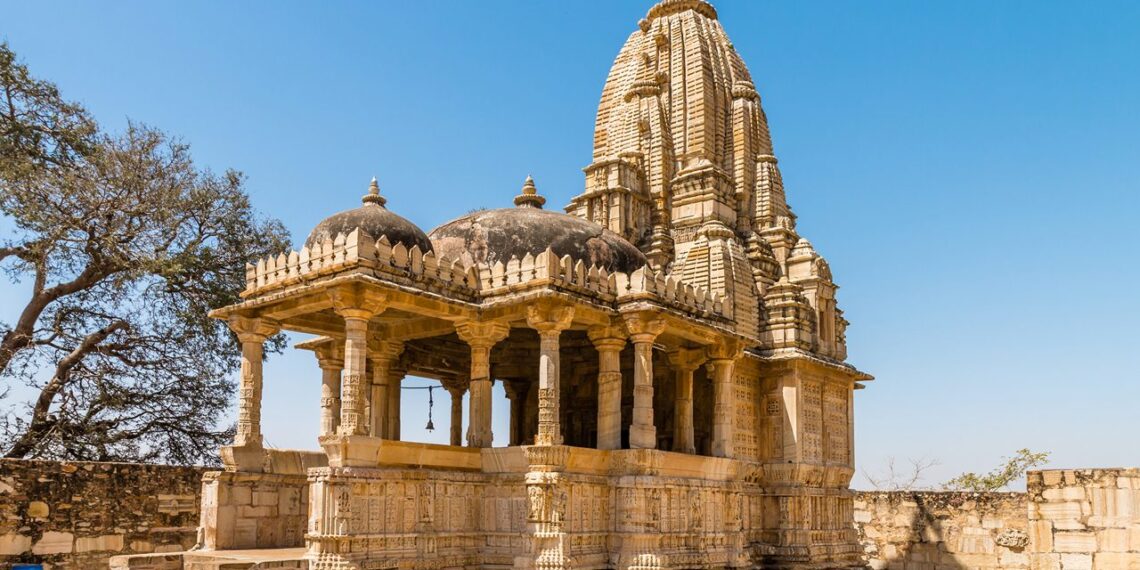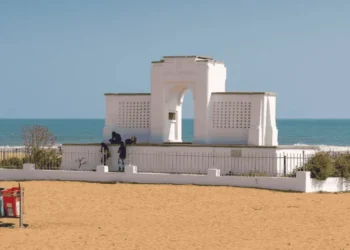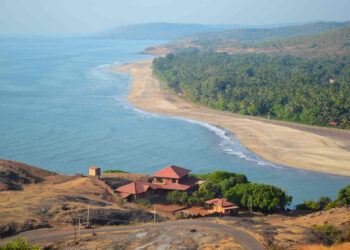Located within the ancient walls of Chittorgarh Fort, about 2 kilometers from Chittorgarh’s city center in Rajasthan, the Meera Temple is a sacred shrine honoring Meera Bai, a 16th-century poetess who was devoted to Lord Krishna with all her heart. This temple though simple, is very special and stands as a mark of her faith and Mewar’s rich past. This blog shares the temple’s past, its stories, its look, why it matters for worship, and what you need to know to visit.
History of Meera Temple
The Meera Temple was built around 1516 AD when Rana Sanga ruled Mewar. Meera Bai, a princess from Merta, married Bhojraj, Rana Sanga’s son, and came to the Sisodia royal family. Her deep devotion to Krishna, shown in her songs and poems, made her known far and wide. The temple was made to honor her faith, which went against the royal ways of her time, causing trouble with her in-laws. Some local tales say Rana Sanga helped build the temple to show respect for Meera’s devotion, but old writings are few.
Inside Chittorgarh Fort, a UNESCO World Heritage Site, the temple sits with palaces and other holy spaces. Over time, local people and devotees have kept it standing, holding Meera Bai’s spiritual touch in Mewar’s story.
Legends of Meera Temple
Meera Bai’s life comes with tales that give the temple a divine feel, shared through her songs and local talk. One story says her in-laws, upset that she cared more for Krishna than royal tasks, tried to poison her. When Meera drank it, the poison turned safe, saved by Krishna’s care. Another tale tells how she was told to drown in a river, but Krishna kept her from harm, showing her true faith in the divine.
A famous story says Meera, after years of prayer, joined with a Krishna idol in Dwarka, Gujarat, leaving no sign of herself. The Meera Temple in Chittorgarh, tied to her days in Mewar, stays a main place for her followers. These tales of devotion bring people who pray for her blessings and feel her sacred presence.
Architecture of Meera Temple
The Meera Temple shows the plain beauty of Rajput building ways. Made of white marble and sandstone, it’s a small place with a domed roof. Its walls have carvings of flowers, a mark of Rajasthan’s style. The main room holds a Lord Krishna idol, dressed in bright cloth and jewels. A smaller statue of Meera Bai, often with an ektara, a one-stringed music tool, stands near, showing her as a poetess.
The temple’s yard is simple, with a few stone pillars and arches. A small platform outside lets people sit and hear bhajans sung by priests, making a calm space.
Rituals and Religious Significance
The Meera Temple is a dear place for those who follow Lord Krishna and admire Meera Bai’s devotion. Her poems, full of love for Krishna, push people to pray for spiritual strength and freedom from worldly things. The temple is a spot for finding peace and faith. Daily aartis at 6:00 AM and 6:30 PM bring chants and incense, joining locals and pilgrims.
Krishna Janmashtami, in August or September, is the liveliest time, with songs, dances, and offerings of flowers and sweets for Krishna’s birth. Meera’s bhajans, still sung, fill the temple, tying people to her devotion. In Chittorgarh Fort, a place of Rajput pride, the temple mixes faith and history, making it deeply loved.
Visiting Information for Meera Temple
How to Get There
The temple is in Chittorgarh Fort, 2 kilometers from Chittorgarh’s city center. You can get there by:
By Air: Udaipur’s Maharana Pratap Airport, 90 kilometers away, is closest. From Udaipur, take a bus or taxi to Chittorgarh, about 2 hours, then an auto-rickshaw to the fort in 10 minutes.
By Rail: Chittorgarh Railway Station, 3 kilometers away, joins Delhi, Jaipur, and Udaipur. From there, an auto-rickshaw or taxi takes 10–15 minutes to the fort.
By Road: Chittorgarh is 115 kilometers from Udaipur and 300 kilometers from Jaipur on NH 48. From the city center, auto-rickshaws or taxis reach the fort in 10 minutes. Parking is at the fort’s gate.
Temple Hours
The temple opens daily, 5:00 AM to 8:00 PM. Aartis are at 6:00 AM and 6:30 PM, but times may change for Janmashtami. Ask temple staff for festival times.
Best Time to Visit
October to March has cool weather, 10°C to 25°C, good for seeing the fort and temple. Janmashtami in August or September is busy with prayers. Summers, April to June, are hot, up to 40°C, so go early. Rainy months, July to September, can make fort paths slippery, so step with care.
Rules for Visitors
Wear proper clothes: men need shirts and trousers or dhotis; women should wear sarees or churidar with a dupatta. No jeans or sleeveless tops.
Take shoes off before going in; there’s a place to keep them.
Photos are okay in the yard, but ask priests before taking any in the main room.
Offerings like flowers or sweets are fine; talk to priests for special prayers.
No smoking, spitting, or alcohol. Eat prasad in the temple.
Bring water, sunscreen, and a hat for the fort’s open spaces. Watch your step on rough paths.
Nearby Places
Chittorgarh Fort: The temple’s home, a UNESCO site with palaces and Vijay Stambh, 2 kilometers from the city.
Rana Kumbha Palace: An old palace in the fort, 500 meters away, part of Mewar’s past.
Padmini Palace: A pretty palace in the fort, 1 kilometer off, tied to Queen Padmini’s story.
Kumbha Shyam Temple: A Vishnu temple in the fort, 200 meters away.
Final Words
The Meera Temple, built around 1516 AD in Chittorgarh Fort, honors Meera Bai’s love for Lord Krishna. Its plain Rajput look, holy rituals, and tales of her faith make it a dear place. In the historic fort, it lets visitors touch Rajasthan’s spiritual and cultural heart. A trip here is a must as it brings you close to Meera’s devotion and Mewar’s proud past, leaving a quiet sense of peace.











